FINANCING
Financing is a topic where it is worth taking a closer look.
Hearing
Taxes, levies
- 31.08.2022: Federal Council decides to modernise the collection system for the Distance-related Heavy Vehicle Fee (HVF)
- Information on the Heavy goods vehicle charge (HGVC)
- HVF calculator from ASTAG
- Renewal of the technical infrastructure of the Heavy Vehicle Fee (HVF) as of 2025
- National consumer price index
Financial aid
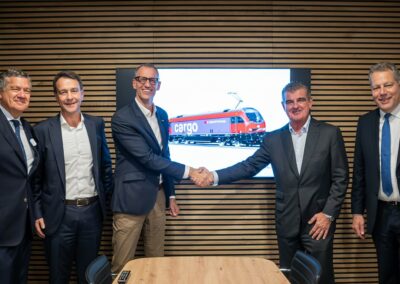
129 new locomotives for SBB Cargo: how does it work?
SBB Cargo wants to renew its fleet with up to 129 modern mainline locomotives by 2035. At the same time, it is complaining about high fixed costs in single wagonload transport (EWLV), has increased its prices excessively over the last few months and reduced its range of services. This harbours the acute danger of a shift back to the road. We at the VAP are questioning the large order and demanding more transparency.
That’s the point:
- SBB Cargo is investing in the future of rail freight transport
- Price increases and service cuts are driving away rail freight customers
- VAP questions economic reasoning and demands transparency
SBB Cargo is investing in the future of rail freight transport
SBB Cargo wants to modernise its fleet and thus secure the future of rail freight transport. In a press release dated 26 September 2024, it announced the procurement of up to 129 new mainline locomotives. The new locomotives are to be delivered between 2027 and 2035 and will replace the outdated traction vehicles. SBB Cargo presents its decision as a necessity to make rail freight transport fit for the future, which is to be welcomed. The new locomotives are more efficient, more powerful and equipped with innovative technologies such as a battery drive for last-mile transport. In this way, SBB Cargo aims to reduce operating costs by 60% and contribute to the automation of freight transport.
Price increases and reduction in services drive away railway customers
We at the VAP are asking ourselves a key question: how does the large-scale procurement of 129 locomotives fit in with SBB Cargo’s current business development and practices? In recent months, SBB Cargo has confronted its rail freight customers with massive price increases and a reduction in services (see VAP blog article «Total revision of the GüTG: The mood in the industry threatens to tip». This market-distorting behaviour could result in a reduction in rail freight volumes and an increased shift to road transport. If this actually happens, such an extensive investment cannot be justified.
VAP questions economic reasoning and demands transparency
Unfortunately, SBB Cargo is keeping a low profile on the operational and financial effects of the major project. This is not exactly conducive to confidence in the state-owned freight transport subsidiary. After all, we are talking about investments in the three-digit million range, which must be borne by the rail freight customers under the premise of economic viability. We therefore consider it essential that SBB Cargo discloses its considerations. Furthermore, we suggest that it reconsider the number of locomotives and consider leasing or partially purchasing more locomotives as a supplement to the purchase.
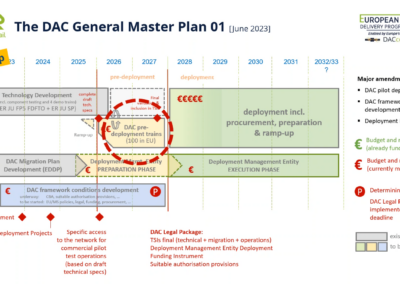
The digitalisation of rail freight transport is picking up speed
Politicians are adapting the framework conditions for the migration to digital automatic coupling (DAK) and the technology for the future standard is being defined step by step. Switzerland is harmonising its introduction process with that in Europe. As industry players, we at the VAP want to drive forward the authorisation for commercial transport and are therefore taking on a key role in the coordination and documentation of the corresponding projects.
That’s what it’s all about:
- Council of States gives green light for DAK and single wagonload transport
- GüTG harmonised with European timetable
- Technology must prove itself as a standard
- Swiss industry takes on pioneering role
- Two stages, one goal: networking with the future
- VAP transforms experience into practical solutions
Council of States gives green light for DAK and single wagonload transport
The developments surrounding the digitalisation of rail freight transport are literally running on several tracks. A course was set in the political process on 24 September 2024. On this day in the autumn session of the Swiss parliament, the Council of States discussed the total revision of the Freight Transport Act and approved the CHF 180 million credit commitment for the introduction of the DAK as well as the CHF 260 million credit commitment for the modernisation of single wagonload transport. The First Council has thus taken up the most important key points of the Federal Council’s dispatch of 10 January 2024 and, with a broad majority, has explicitly spoken out in favour of the digitalisation of freight transport with the innovation that has been refined over many years. Federal Councillor Albert Rösti said in his speech to the full Council: «In addition to digital automatic coupling, further concrete modernisation steps should be taken, such as booking platforms.» We explain why this comment reflects a holistic perspective on the DAK in our blog post «Data ecosystems: Industry round table with Federal Councillor Rösti» .
GüTG harmonised with European roadmap
The planning of the revised GüTG and the corresponding ordinance harmonises with the European roadmap. They are expected to come into force between the end of 2026 and the beginning of 2027. The budgeted federal funds for DAC migration will then be available. The stakeholders of the European DAC Delivery Programme (EDDP) of Europe’s Rail want to roll out DAC migration on a large scale from 2028. This implementation programme brings together railway undertakings, infrastructure managers, wagon keepers and the rail supply industry, maintenance bodies, industry organisations, rail research centres and political institutions. This integrated joint programme builds on research and development results and pilot projects and aims to ensure the necessary measures for a rapid, technically and economically feasible Europe-wide DAC roll-out.
Technology must prove itself as a standard
In order to achieve this ambitious goal, a developed and operationally proven technology is required. Here, too, the EDDP has already done considerable groundwork and communicated the «DAC Basis Package» as the future system standard for European rail freight transport at the beginning of 2024. The EDDP envisages pilot trains throughout Europe to refine and comprehensively test the technology of the «DAC Basis Package». The starter package contains the following components:
- DAC (mechanical/pneumatic) including energy/data system
- Recognising the train composition
- Automatic brake test
- Train completeness test
- Automatic uncoupling (in the train from the locomotive or from the carriage side)
An important system decision is still pending: For the data transmission technology in the train, the options Single via Ethernet and Powerline+ are in the final selection. As successful tests with Powerline+ have already been carried out in Switzerland, a pilot train with this technology that is ready for approval is now to be realised in the near future.
Swiss industry takes on pioneering role
Switzerland wants to make a substantial contribution to the European DAK development project coordinated by the EDDP and coordinate it closely with the EDDP’s European organisations. The Swiss railway industry is therefore preparing to push ahead with system integration for the approval of commercial applications. The technical specifications and functional scope of the «DAC Basis Package» and the Powerline+ transmission technology form the basis for the Swiss project team’s further work. Accordingly, the FOT, VAP and VöV will extend their jointly signed declaration of intent on automation in rail freight transport accordingly.
Two stages, one goal: networking with the future
Switzerland’s contribution to the introduction of DAK will take place in two stages. Firstly, system integration on the Swiss pioneer train is to be driven forward rapidly until it is ready for approval and its suitability for everyday use will then be demonstrated in commercial operations. The federal government will support the development with funding in accordance with Article 10 of the Goods Transport Act.
- The EP3 development project to realise the approval of a first pioneer train with the «DAC Basic Package» functions has begun. The aim is to obtain a FOT operating licence for defined commercial journeys on the Swiss standard-gauge network by mid-2026. To this end, around 30 motivated Swissrail members, SBB Cargo, the FOT and VAP representatives announced their intention on 30 August 2024 to jointly make rail freight transport competitive and promote Swiss DAC technology to the outside world. With EP3, the industry players want to play a key role in defining the future European standard for rail freight transport. It is now time to move beyond fundamental discussions and develop operationally viable solutions. The new systems must be robust, suitable for everyday use and affordable so that goods trains can operate successfully in the future.
- Following the completion of EP3, the EP4 development project aims to bring several DAK trains onto the Swiss rail system for commercial journeys in the period from 2026 to 2027. Initial discussions with shippers have already taken place. Isolated transport operations are being sought that are suitable for an early DAK conversion as pioneer trains. The aim of this second stage is to gather operating experience and further optimisation in real operations. The pioneer trains are intended to give stakeholders and investors involved a concrete picture of the future possibilities with DAC and the associated digitalisation of rail freight transport.
VAP transforms experience into practical solutions
We at the VAP will coordinate and document the aforementioned projects for all interested parties and stakeholders. In this way, we want to ensure a broad exchange of experience and full practicability right down to the sidings and logistics of the economy. Our members – above all the shippers and wagon keepers – are actively involved in both stages of development. In this way, findings from pilot projects can be scaled and synergies can be utilised for all industry players.
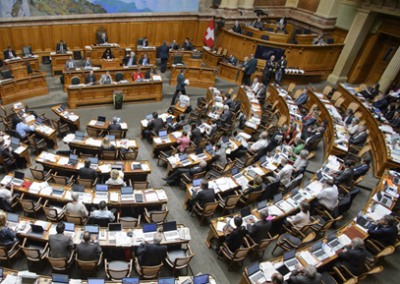
Autumn session 2024: transport policy on the agenda
In the autumn session from 9 to 27 September 2024, Parliament discussed various transport policy issues. Particular attention was paid to the revision of the Freight Transport Act (GüTG). This bill stands in stark contrast to SBB Cargo’s de facto solo effort.
That’s what it’s all about:
- Rail infrastructure 2025–2028
- Rösti and Burkart warn against drastic tariff increases
- Further financial injection for SBB
- Relocation targets for the expansion of the NEAT feeder lines
Maintain and further develop rail infrastructure from 2025 to 2028
On 23 September 2024, the National Council was the first chamber to discuss Federal Council proposal 24.045 ‘Financing the operation and maintenance of the railway infrastructure, system tasks in this area and investment contributions to private freight transport facilities in the years 2025–2028’. On 15 May 2024, the Federal Council requested a total payment framework of CHF 16.442 billion for the upcoming tasks, around CHF 2 billion more than in the previous period.
With this proposal, the Federal Council is setting the targets for the operation, maintenance and technical development of the railway infrastructure financed by the federal government for the years 2025 to 2028. For the third time, financing will come entirely from the railway infrastructure fund (BIF). The National Council approved the credit while rejecting a minority motion to increase the credit by 500 million.
At the same time, the Federal Council proposed extending the existing framework credit for investment contributions to private freight transport facilities by one year from 2021 to 2024. This is because the realisation of major projects has been delayed.It also envisages a four-year commitment credit of CHF 185 million for investment contributions to facilities for the handling of goods in combined transport (CT) and to sidings. This is to be used to finance the construction, expansion and renewal of the following components:
- CT transhipment facilities and sidings in Switzerland that comply with the concept for the transport of goods by rail in accordance with Article 3 GüTG
- CT transhipment facilities abroad that are necessary to achieve the modal shift objective in accordance with Article 3 GVVG
- Port facilities for the transhipment of CT goods
The National Council approved the Federal Council’s proposal by 194 votes to 1. The matter will now go to the Council of States.
Controversial developments in the debate on rail freight transport
On 24 September 2024, the Council of States was the first chamber to discuss the total revision of the GüTG. We reported on the latest developments in our blog post «Debate on Swiss rail freight transport threatens to derail».
With the revision, the legislator wants to enable more competition on the railways, strengthen single wagonload transport and prevent market-distorting discrimination. It wants to modernise the outdated system through automation and digitalisation, continue to provide financial support for the construction and renewal of private freight transport facilities and reimburse the HVF to freight payers as a new handling fee.
After a detailed discussion, the Council of States voted in favour of the bill by 35 votes to 3 with 3 abstentions.
This decision is in the context of the current mood of Swiss rail freight customers. SBB subsidiary SBB Cargo has been causing consternation among shippers for several weeks with disproportionate price increases – while offering the same or worse services. The consequences of this controversial behaviour are fatal. Many private-sector shippers are being forced to shift up to 10% of their freight transport volume back to the roads because transport by rail is no longer profitable. SBB Cargo, on the other hand, offers no willingness to discuss the development of alternatives.This behaviour contradicts the efforts of the GüTG revision and the consensus that was agreed between politicians, business and the state railway before the parliamentary consultation. In his speech, Councillor of States Thierry Burkart, FDP/AG, who is also President of ASTAG, emphasised that SBB’s pricing policy is not only geared towards what is perhaps necessary, but also towards what is possible in the market in order to avoid a shift back to road transport despite subsidies. In his speech, Federal Councillor Rösti also referred to three key elements in this context: loading flat rates, increased efficiency and prices, which should be optimised. These three areas are needed to ensure profitability in the end and to prevent any relocation. Based on his discussions with important shippers, he believes that the situation can be calmed to some extent and a solution found.
Further financial injection for the Swiss Federal Railways
On 11 and 19 September 2024, the Council of States and on 16 and 23 September 2024, the National Council again discussed the Federal Council’s proposed amendments to the Federal Act on Swiss Federal Railways (SBBG). After the last discussion, differences remained regarding Art. 20 on financing instruments. SBB should now be able to finance investments outside the area of the Infrastructure division entitled to compensation by means of interest-bearing and repayable loans from the Federal Treasury as long as it complies with the net debt requirements defined in the Federal Council’s strategic objectives. If SBB’s borrowing requirements for these investments exceed the net debt requirements set out in para. 1, they must be covered by capital contributions from the Confederation. The Federal Council shall apply to the Federal Assembly for the necessary capital injections as part of its budget.
The Council of States came to the conclusion that the financial support for SBB should be reduced. In the second round of deliberations on Wednesday, it voted in favour of a reduction to CHF 850 million without opposition and then released the spending brake. Marianne Maret (centre/VS), President of the Transport Committee, explained that SBB had recovered more quickly from the crisis, while the federal government’s financial situation was deteriorating. The National Council followed the Council of States and approved the reduced capital subsidy for SBB. It also ironed out the differences on loans by agreeing to a more flexible upper limit for vault loans.
The Councils’ decisions must be viewed in a broader context. In order to restore balance to the financial imbalance of the federal operation, a majority of the National Council agreed in the 2023 winter session to grant SBB a one-off capital injection in the amount of the long-distance transport losses of CHF 1.15 billion to reduce debt. Subsidiary SBB Cargo, which has already received extensive financial support in the wake of the Covid pandemic, will also benefit from this financial injection. It is about to conclude a service agreement to compensate for its network traffic, which it obviously cannot handle on its own. The private sector players, on the other hand, have neither received Covid funds nor do they have non-essential resources and investments to strengthen their investment capacity.
Balance sought between modal shift targets for the expansion of the NEAT feeder lines
The three motions 24.3389 «Advancing the expansion of the NRLA feeder lines on the left bank of the Rhine in the interests of modal shift», 24.3390 «Stabilising combined transport on the north-south axis by providing buffer tracks» and 24.3391 «For a greater modal shift to medium transport distances» came before the Council of States on 24 September 2024. The submitting Committee for Transport and Telecommunications wants to optimise the feeder lines to the NRLA.
The Council of States adopted the first two motions, but rejected the third. Their adoption presupposed a modal shift mandate for domestic traffic as well, which is not provided for in the constitution.
In principle, we welcome efficient routing on the north-south corridor in terms of security of supply, alternative capacities in the event of roadworks, punctuality and quality of rail freight transport. VAP President and member of the Council of States Josef Dittli already expressed this opinion at the anniversary meeting with former Federal Councillor Adolf Ogi in autumn 2021 (see blog post «25 years of the “Treaty of Lugano” – a look into the future»).
However, we criticise the one-sided focus of the motions on CT. Those responsible for the modal shift are thus missing the opportunity to promote other forms of multimodal transport beyond single wagonload transport. This is in clear contrast to the joint policy of the DACH states (Germany-Austria-Switzerland) to rapidly introduce digital automatic coupling (DAK). Furthermore, the motions contradict the revision of the GüTG (see above), as they pursue environmental and energy policy objectives not only in import, export and domestic transport, but also in transit.
We at the VAP demand that the Federal Council also clarify and present the potential with other multimodal modes of transport in the next modal shift report. Quality monitoring should also be introduced for conventional goods trains, as has been the case in CT for years. The distinction between combined and conventional transport must be abolished. The GüTG introduces financial support for import, export and domestic transport. In transit, however, only unaccompanied CT (UCT) should continue to receive financial support. We believe that this approach is not compatible with the objectives of the GüTG. This is because the constitutional mandate in the Güterverkehrsverlagerungsgesetz (GVVG) defines the modal shift in transit as a shift to rail, not to UCT. Only Art. 8 GVVG introduces the addition ‘primarily’ for the promotion of UCT, to the detriment of other multimodal logistics solutions with a rail component (see box).
|
Art. GVVG Promotion of rail freight transport (version in accordance with No. I of the Federal Act of 16 June 2023, in force since 1 Jan. 2024) 1 In order to achieve the modal shift objective, the Confederation may adopt support measures. These measures primarily promote unaccompanied combined transport. These measures must not have any discriminatory effects on Swiss and foreign transport companies in freight transport.amit das Verlagerungsziel erreicht wird, kann der Bund Fördermassnahmen beschliessen. Dabei wird in erster Linie der unbegleitete kombinierte Verkehr gefördert. Diese Massnahmen dürfen keine diskriminierenden Auswirkungen auf die schweizerischen und ausländischen Transportunternehmen im Güterverkehr haben. 2 In unaccompanied combined transport, the average level of compensation per consignment transported must decrease from year to year. 3 Accompanied combined transport (Rolling Highway) may be subsidised until the end of 2028. 4 The Confederation may contribute to the operator’s liquidation costs in the year following the cessation of Rolling Highway operations. |
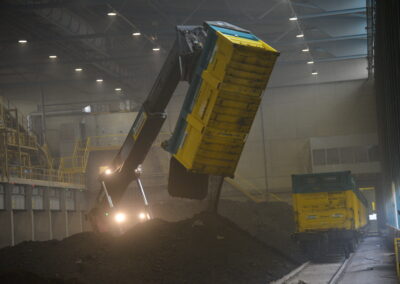
Total revision of the GüTG: The mood in the industry threatens to tip over
The Committee for Transport and Telecommunications of the Council of States (KVF‑S) has concluded its deliberations on the total revision of the Goods Transport Act (GüTG). Like the Federal Council, it wants to improve the framework conditions in favour of multimodal logistics chains. However, SBB Cargo’s current behaviour, with massive price increases and a reduction in services, contradicts these efforts and puts shippers in a dangerous dilemma.
This is the issue:
- What has happened so far
- A clear yes to multimodality and competition
- Controversial behaviour of SBB Cargo
- The Confederation has a duty
- Together out of the dilemma
What has happened so far
We have already reported in detail on the KVF-S’s initial proposals on the Federal Council’s dispatch on the Freight Transport Act (total revision of the Federal Act on Freight Transport by Rail and Shipping Companies) in our blog post ‘Now or never: groundbreaking debate on Swiss rail freight transport’. As communicated on 21 June 2024, the preliminary consultation committee wants to strengthen competition in freight transport in a targeted manner, regulate RailCom’s responsibility for enforcing a non-discriminatory offer in single wagonload transport (EWLV) and specify the content of the guidelines for rail freight transport as the basis for the EWLV service agreement.
A clear yes to multimodality and competition
The Council of States Committee has now completed its detailed deliberations. In its latest media release dated 20 August 2024, it calls on the legislator to stipulate in the regulations that loading contributions are passed on to shippers and recipients and that internal company services are made transparent and monitored.Finally, a majority of the committee suggests that an extension of the EWLV subsidy should be decided by Parliament and not by the Federal Council. In this way, the KVF‑S would like to ensure that the financial competence and the decision on a possible extension of support are at the same level
Controversial behaviour of SBB Cargo
Shippers’ tempers are currently running high over the behaviour of the SBB subsidiary SBB Cargo, which clearly runs counter to the efforts of the KVF‑S and the Federal Council’s previous statements. The monopoly provider demands a surcharge of 20% to 60% for its services – quite naturally and without cost transparency or the possibility of reducing costs from the system together with the rail freight operators. Even if the GüTG is amended as proposed and the Council of States approves the proposals of the KVF‑S, there is an acute danger that shippers will shift their transport operations to the road on a large scale. As such a strategic reorientation does not happen overnight, they will adapt their logistics concepts over the next two years. In this case, both the bill itself and the federal funding required for it would be obsolete – as would a parliamentary debate on the matter in the 2024 autumn session.
The federal government has a duty
In order to avoid unjustified market discrimination and a shift to the road, shippers could also orientate their logistics concepts towards alternative rail services offered by innovative and courageous rail freight companies and shift their transport volumes from a state monopoly to market-based competition. This would be in line with the aim of the KVF‑S, which calls for more competition through service agreements and revised guidelines on EWLV. It is therefore not insignificantly the responsibility of the federal government to initiate appropriate measures in the ordering process as soon as possible, to invite private freight railways to submit offers and to support them in their development.
Together out of the dilemma
The industry must find a way out of the current dilemma before the debate escalates. It is now up to the industry players and the federal government to work together to enable more competition and fundamentally modernise the EWLV. To do this, they must work hand in hand to change the organisation of the EWLV system, open it up more to third-party providers and develop it further on an equal footing. The private sector has already come up with some attractive solutions. If Parliament says yes to the promotion of EWLV and thus strengthens intramodal competition, shippers and rail freight companies could refrain from defiant reactions. Instead, they could – together with the SBB – seize the opportunity to finally break away from the monopolistic EWLV and develop a self-economic, broad-based network offer.

Now or never: groundbreaking debate on Swiss rail freight transport
In the spring, the Council of States’ Committee for Transport and Telecommunications (KVF‑S) took up the total revision of the Goods Transport Act (GüTG) and triggered ground-breaking discussions on Swiss domestic goods transport in Parliament. Together with other stakeholders, we at the VAP will help shape this debate. Our aim is to find a workable compromise and to emphasise the interests of our members.
That’s what it’s all about:
- Good news for parliament
- First proposals from the KVF‑S
- Lively dialogue between the stakeholders concerned
- Challenges for the economy and European logistics as a whole
- Pain threshold reached
- This is the way forward
Good news for parliament
On 9 February 2024, the Swiss Federal Council published its dispatch on the Freight Transport Act (total revision of the Federal Act on the Transport of Goods by Rail and Shipping Companies). In our view, particular attention should be paid to the following financial aspects
- Operating charges: In order to maintain single wagonload transport (EWLV) at the current nationwide level during the conversion phase, the Federal Council plans to subsidise it financially on a degressive basis for a limited period of eight years. At the end of this period, the aim is to achieve self-sufficiency. It is requesting CHF 260 million for the first four years.
More on this in the freight transport factsheet. - Incentives for shippers: The plan is to introduce unlimited transhipment and loading contributions and to compensate for the uncovered costs of the ordered freight transport services for a total of CHF 60 million per year.
Initial proposals of the KVF‑S
The KVF‑S, as the preliminary advisory committee of the First Council, adopted the total revision of the GüTG this spring after consulting the industry, including the VAP. The discussions in parliament over the coming weeks and months will be groundbreaking for the future of rail freight transport across the country. In its detailed deliberations, the committee examined numerous points. The majority of the committee is of the opinion that the total revision of the GüTG is suitable for ensuring and improving sustainable interaction between the various modes of transport for Swiss transport policy. It suggests making the following changes to the content:
- Explicit strengthening of competition in freight transport
- Clear regulation of RailCom’s responsibility for reviewing and enforcing the non-discriminatory non-discriminatory provision of EWLV services
- Specification of the content of the guidelines for rail freight transport (basis for the service agreement in the EWLV)
- Transfer of authority to extend certain provisions (in particular compensation) from the Federal Council to Parliament
The committee is expected to finalise the detailed discussion with additional information from the administration at its next meeting. The matter will then go to the plenary session of the Council of States.
Lively dialogue between the stakeholders concerned
Over the past few weeks, we have held discussions – with the support of our members – with the stakeholders of the Wagonload Transport Interest Group (IG WLV), the Federal Office of Transport (FOT) and the SBB Cargo subsidiary of Swiss Federal Railways (SBB). Alexander Muhm, CEO of SBB Cargo, presented the rough concept for a transformation towards self-sufficiency to the VAP’s Executive Committee. Muhm’s presentation triggered an intensive discussion between the parties involved and further talks on the possibilities and risks.
Challenges for the economy and European logistics as a whole
A look at the statistics shows that the transfer figures in Switzerland and Europe are stagnating or even shrinking slightly. There are many reasons for this. In Germany, there is great uncertainty about potential investment programmes and the timing of a noticeable economic upturn. Italy and France are struggling with modest growth figures and high levels of debt. This, combined with consumer sentiment, is having a direct impact on companies and their financial situation.
In logistics, in addition to the closure of the Suez Canal or natural disasters, there are other enormous challenges such as major construction sites (e.g. on the German rail network) and corresponding diversion traffic or higher track prices. All of this is fuelling operating costs and putting pressure on the competitiveness of the railways. The state of overall European logistics is important insofar as the majority of goods used in Switzerland originate from abroad and influence the EWLV in and through Switzerland.
Pain threshold reached
Since our foundation, we have been committed to attractive, competitive and customer-oriented rail freight transport and thus to the best possible modal shift to rail. We are committed to this goal either as a partner to numerous freight transport stakeholders or with our own ideas and projects. In transport policy, we advocate sufficient capacity on all infrastructures, favourable logistics locations and sensible framework conditions.
In view of global competition and the current framework conditions for the Swiss economy, the shipping industry as our membership does not have to or cannot afford massively higher costs on the railway. Our members can no longer cushion the impact of mistakes such as the lack of (investment) strategy in the area of rolling stock over the last 20 years, the ongoing dismantling of infrastructure facilities (dismantling of tracks, construction of investment properties) or insufficient integration into overall concepts from the perspective of users and customers. The consequences of such mistakes, such as massive price increases (beyond inflation), are fatal for the economy and society. The competitiveness of rail compared to road is dwindling and the optimisation of the modal split is being thrown into disarray. In addition, increasing cost sharing for the operational use of service points can send the wrong signals.
For our members, the pain threshold has long since been reached. We are prepared to provide significant support for the further development and transformation of rail freight transport. Provided that those responsible ensure complete transparency regarding costs and their breakdown and take measures within a fair, compatible and harmonised framework.
The way forward
We are taking the findings from the numerous discussions with the KVF‑S and other stakeholders as an opportunity to initiate numerous activities within our membership and organise further coordination meetings. Anyone who would like to talk to us about logistics as the backbone of the Swiss economy is cordially invited to join the dialogue.
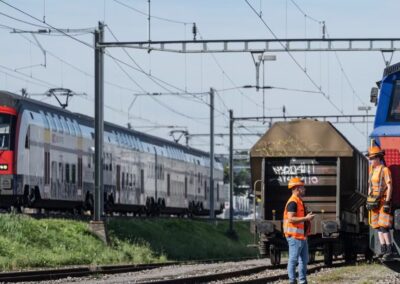
Joy at SBB, concern at SBB Cargo
SBB is in excellent financial health. This was communicated on 11 March 2024 with the 2023 annual accounts. Only subsidiary SBB Cargo is still considered a problem child and is to receive financial support. We at the VAP think so: This must not be tantamount to permanent subsidisation of single wagonload traffic (EWLV). And the proposed financial injection of CHF 1.25 billion is invalid in view of the 2023 annual accounts.
That’s the point:
- 2023 results: black and record-breaking
- Eternal problem child remains in deficit
- Record results and billions in aid – how does that fit together?
- Corporate responsibility required
2023 results: black and record-breaking
1.3 million travellers, CHF 269 million profit, 9.9 % additional revenue from passenger transport, 92.5 % punctuality despite 20,000 construction sites, debt down to CHF 11.3 billion, all investments financed from cash flow: SBB’s 2023 financial year is bursting with good news and superlatives. For the first time in the post-Covid era, SBB is back in the black. This pleasing performance is primarily due to a record number of passengers and substantial profits from SBB Real Estate. It is therefore not surprising that those responsible are looking to the future with confidence.
Eternal problem child remains loss-making
The financial situation in the freight transport division of the re-nationalised SBB Cargo looks much less rosy. Although the 2023 result of SBB Cargo Switzerland improved by CHF 148 million compared to the previous year to minus CHF 40 million, this is mainly due to impairments from 2022. Transport performance fell by 7.5 % compared to the previous year. According to SBB, the main drivers were price pressure, the structural deficit in the EWLV and the economic slowdown.
The only thing that remains unclear is how high this so-called structural deficit should actually be quantified. In the political debate, SBB speaks of CHF 80 to 100 million, while the 2023 Annual Report states CHF 40 million. Has SBB Cargo generated a profit of CHF 40 to 60 million in block train transport?
Record results and billions in aid – how does that fit together?
Peter Füglistaler, Director of the Federal Office of Transport (FOT), gives a plausible answer to this question in his comment on LinkedIn: «I don’t know». The fact that SBB is doing well financially is indeed commendable. After all, shippers want strong partners in the transport business. Nevertheless, we at the VAP are sticking to our position: SBB Cargo’s financial difficulties should not be confused with the necessary modernisation and restructuring of EWLV. In January 2024, the Federal Council rightly requested measures for the modernisation of the nationwide EWLV in its «Message on the Freight Transport Act» (see blog post «Setting the right track for inland freight transport by rail»). Instead of a reorganisation contribution to the EWLV, we are calling for targeted, degressive and temporary bridging funding for a sustainable transformation of the EWLV towards self-sufficiency. Only in this way can the EWLV modernise and grow.
Entrepreneurial responsibility required
Parliament is currently discussing the «Dispatch on the amendment of the Federal Act on Swiss Federal Railways (sustainable financing of SBB)». According to this, the federal government is to cover SBB’s pandemic-related deficits in long-distance transport. VAP President and Councillor of States Josef Dittli commented: «Why should the federal government, which has just announced linear cuts and plans to make cuts, use taxpayers’ money to support a state-owned company that is achieving record results? This is where I make an urgent appeal to the corporate responsibility of those involved.»
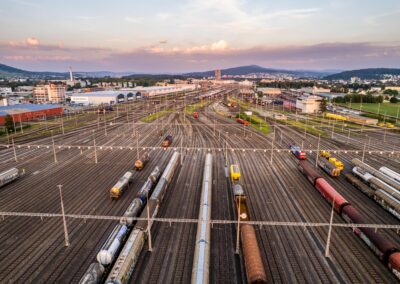
Setting the right track for inland freight transport by rail
The Federal Council released its message on the Goods Transport Act to the Parliament in January. It aims to modernize the comprehensive single-wagon load transport (EWLV) and establish the foundation for its economic viability. Despite various reservations, the Federal Council proposes investment subsidies, temporary operating compensations, and incentives for shippers.
Key Points:
- Federal Council aims for economic viability
- EWLV to undergo fundamental restructuring and modernization
- Support for EWLV operation during the modernization phase
- BAV criticizes industry guidelines
- Overview of the proposal
- What’s next
Federal Council aims for economic viability
On January 10, 2024, the Federal Council adopted the message on the Goods Transport Act (in German) for Parliament. We, from VAP, welcome the continued pursuit of the favored Variant 1. With this proposal, the Federal Council intends to modernize rail freight transport technically and organizationally, strengthen multimodal transport chains, and better integrate shipping. The overarching goals are to enhance supply security nationwide, promote multimodality, and contribute to the federal environmental and energy targets. This involves securing current area coverage, gradually increasing the share of rail freight transport, and laying the groundwork for economically independent operation.
EWLV to undergo fundamental restructuring and modernization
The basis for this is a comprehensive restructuring of the EWLV, or network traffic, with associated technological modernization (especially digitization), integration into the Swiss logistics system, and the establishment of non-discriminatory intramodal competition. The latter is expected to significantly improve the quality and efficiency of logistics services and simplify future innovations. The proposal allocates investment funds of CHF 180 million for the introduction of digital automatic coupling (DAK). Additional investment funds are earmarked for digitized process optimizations, data exchange platforms, and similar initiatives.
Support for EWLV operation during the modernization phase
To maintain current area coverage, the operation will be financially supported for eight years during the modernization phase. Allegedly uncovered costs will be covered, and compensations will decrease in line with the progress of the restructuring, determined in multi-year performance agreements with all freight railways involved in network traffic.
BAV criticizes industry guidelines
To ensure the success of this transformation and stable EWLV operation during the restructuring phase, the industry has proposed guidelines for specific measures and support criteria. However, the Federal Office of Transport (BAV) criticizes these as insufficient and demands further revisions. It particularly highlights the lack of perspective for a comprehensive redesign to enhance efficiency and utilization, foreseeing a tendency towards structural maintenance and further service reduction. The VAP understands the BAV’s reservations, as the guidelines represent a compromise between shippers and freight railways, with significant concessions made by VAP in the interest of the cause. Substantial revisions are now necessary, especially from the perspective of freight transport customers as users of logistics services.
We are prepared to significantly support further development. A comprehensive operational control system is seen as a crucial prerequisite for this transformation, serving as an evaluation tool for the effectiveness of measures and incentives, along with the establishment of a digital platform. The transformation should be methodically structured and implemented in a targeted manner as a project.
Overview of the proposal
- Investment subsidies: The Federal Council allocates CHF 180 million for the introduction of DAK, covering approximately one-third of the restructuring costs. The conversion of rolling stock must be coordinated across Europe and is expected to be completed by 2033. DAK is anticipated to substantially improve the productivity and quality of rail freight transport.
DAK Factsheet (PDF, 971 kB) - Operating compensations: To maintain EWLV at the current comprehensive level during the restructuring phase, the Federal Council proposes to financially support it for eight years on a degressive basis. By the end of this period, economic viability should be achieved. For the first four years, it requests CHF 260 million.
Freight Transport Factsheet (PDF, 712 kB) - Incentives for shippers: Permanently planned are handling and loading contributions, along with compensation for the uncovered costs of the ordered freight transport service, totaling CHF 60 million per year.
Read the complete message on the Goods Transport Act.
What’s next
- In the first half of 2024, open points between BAV and the industry will be discussed, and guidelines will be supplemented and clarified accordingly.
- Within this framework and following the approval of the revised law, a tendering process for various service packages within network traffic is expected to start by the end of 2024.
- Negotiations on potential performance agreements are planned for 2025, allowing any support measures to take effect in early 2026.
For further details, refer to this joint press release from VAP, LITRA, ASTAG, IG Kombinierter Verkehr, and VöV.

Ready for the next level of digitalisation
Without digital automatic coupling (DAC) there is no digitalisation and without digitalisation there is no competitiveness. This is how the modernisation of the rail freight sector could be described. However, it’s not quite that simple. Here is an overview of the status quo and the next steps to be taken.
This is what it’s all about:
- Combining hardware and software in a targeted manner
- Financing must provide the initial spark
- «Management Deployment DAK-CH» coordinates the migration
- Test phase: Switzerland at the forefront
Combining hardware and software in a targeted manner
The DAK gets the comprehensive digitalisation of the railway rolling. This is because it offers more than just fully automatic coupling or various tracking functions for individual wagons. It enables a leap forward in Swiss rail freight transport by supplying power and data to the entire train. But that’s not all. Data ecosystems are also required for digitally inspired business models in rail freight transport. The state mobility data infrastructure «MODI» is setting a good example here (see blog post «Data ecosystems: Sharing data to double its added value»). In order to combine hardware and software in such a way that the rail freight sector becomes competitive in multimodal logistics, high initial investments are required. Private companies in the freight transport sector will not be able to bear this alone.
Funding must provide the initial impetus
In Switzerland, the Federal Council adopts its dispatch on freight transport in January 2024 and forwards it to Parliament. A central component of this bill is the funding for migration to the DAK. The Federal Council envisages a funding contribution of CHF 180 million. The calculated investment volume for nationwide DAC migration in Switzerland amounts to CHF 500 million. We at the VAP are taking a leading role in the planning of financial resources. The federal government wants to finance the MODI data ecosystem for the first 10 years and then charge user fees. The European Union (EU) has also yet to fund DAC migration. The EU Commission intends to provide around EUR 200 million for the planned field tests from 2026.
«Management Deployment DAK-CH» coordinates the migration
The cross-industry committee «Management Deployment DAK-CH» will be responsible for coordinating the migration implementation in Switzerland. Among other things, this committee is responsible for the active exchange with Europe’s Rail, the planning of workshop capacities, the material disposition and the verification of the conversions. It must schedule the conversion of the vehicles in advance together with the keepers, as well as with the railway companies and other logistics players. In the meantime, the rail freight companies should determine their requirements for converted wagons according to the volume of traffic.
Test phase: Switzerland at the forefront
The functions and processes of the DAK must be harmonised throughout Europe. One milestone is the definition of the «Starter Package». This defines which functions the DAK migration will start with in Europe. Switzerland is currently actively involved in operational tests of new systems and is contributing pioneering results to the European working groups. Here is an overview of the current tests and projects with Swiss participation:
- The EU is having the rail technology specifications drawn up for the implementation of the «Greening Freight Traffic Package» of the European DAC Delivery Programme (EDDP). Switzerland is actively involved here.
- With «Power-Line-Plus», data is sent via the power supply lines. The Lucerne University of Applied Sciences and Arts is conducting operational tests together with SBB Cargo and providing key insights into data transmission quality. From 2024, proof of operational suitability is to be provided with all the functions of the «Starter Package» and transmission via «Power-Line-Plus», making commercial journeys possible. The FOT is supporting this development financially.
- From 2026, extensive field tests for the operational suitability and reliability of the DAK are planned in Europe with around 100 trains. After that, the aim is to migrate DAK efficiently, including in Switzerland.
- MODI consists of two main elements: The National Data Networking Infrastructure Mobility (NADIM) enables the standardised exchange of mobility data. The national geodata infrastructure «Transport Network CH» can ensure a standardised, digital representation of Switzerland’s entire transport system. MODI is currently only intended for passenger transport. However, freight transport could also benefit from this, for example through the digital networking of public authorities, transport and spatial planning authorities and all stakeholders involved. For this reason, the VAP is in close contact with the responsible offices of the federal administration in order to quickly integrate freight transport into the project.
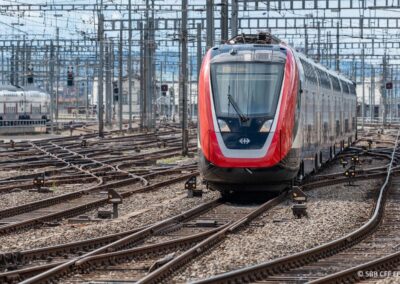
Partial revision of SBBG: responsibility and market liberalisation further delayed
The Committee for Transport and Telecommunications of the National Council (KVF‑N) unanimously supports the proposal for the financial stabilisation of the Swiss Federal Railways (SBBG). In contrast to the Federal Council, it is of the opinion that there is no need to change the system for granting vault loans to SBB. In doing so, the KVF‑N also disregards all of the VAP’s recommendations.
This is the issue:
- 3 billion financial injection for SBB
- SBBG partial revision referred to the National Council
- The industry’s voice remains unheard
- Still no market liberalisation in sight
3 billion financial injection for SBB
In its report of 16 December 2022 on motion 22.3008 «Supporting the implementation of SBB investments and a long-term vision in Covid-19 times», the federal government proposes to cover SBB’s deficits in long-distance transport with a one-off capital injection of an estimated CHF 1.25 billion. It also wants to ease the track access charges for long-distance transport with a further CHF 1.7 billion. It is also proposing a revision of the financing instruments.
SBBG partial revision referred to the National Council
The KVF‑N has unanimously referred the bill to amend the SBBG to the National Council. The majority of the committee also rejects a change in the system of financing instruments, as budget loans, unlike treasury loans, are subject to the debt brake. It is of the opinion that the resulting competitive situation with other federal expenditure is not desirable with regard to public transport services. The National Council will decide on the KVF‑N proposal in the 2023 winter session.
Voice of the industry remains unheard
As published in our media release of 30 March 2023, we at the VAP reject the proposed extraordinary restructuring of long-distance transport with around 3 billion taxpayers’ money. On the other hand, we welcome the proposed correction of the financing instruments, i.e. the waiver of the granting of vault loans to SBB bypassing the federal debt brake. In the blog posts «SBB should take responsibility instead of a CHF 3 billion financial package» and «No stabilisation of SBB despite CHF 3 billion in additional federal funds», we summarise the industry’s position and our corresponding arguments.
Still no market liberalisation in sight
If the bill is accepted, the National Council would further consolidate the SBB monopoly in long-distance transport. This is problematic in terms of European policy, as the EU is demanding that Switzerland open up the long-distance transport market. This unfulfilled demand overshadows the negotiations with the EU on the extension of the temporary cooperation with the European Railway Agency ERA for one-stop-shop authorisations and more interoperability between Switzerland and the EU. Compared to EU member states, Switzerland does not yet have full market access; the Swiss railway network is currently not an integrated part of the European interop network. For this reason, the freight transport-related associations Astag, CFS and we at the VAP are calling for a national migration strategy to open up the market in line with the EU. If the National Council votes in favour of the KVF‑N motion, it will push this issue even further away.
Addendum 20.12.2023, update from the winter session:
In the winter session, a majority of the National Council agreed to grant the Swiss Federal Railways (SBB) a one-off capital subsidy of CHF 1.15 billion to reduce debt. This amount was already included in the 2024 budget. In contrast, the National Council rejected the Federal Council’s proposal to switch from treasury loans to federal budget loans when a certain level of debt is reached. This was based on the argument that applying the debt brake to budget loans could delay the expansion. The chamber also decided to set the appropriate reserve for the railway infrastructure fund (BIF) at a minimum of CHF 300 million, with a maximum of two thirds of the net revenue from the performance-related heavy vehicle charge (LSVA) flowing into the fund. The National Council has thus ignored all of the VAP’s recommendations. The bill now goes to the Council of States, which will hopefully take corrective action.